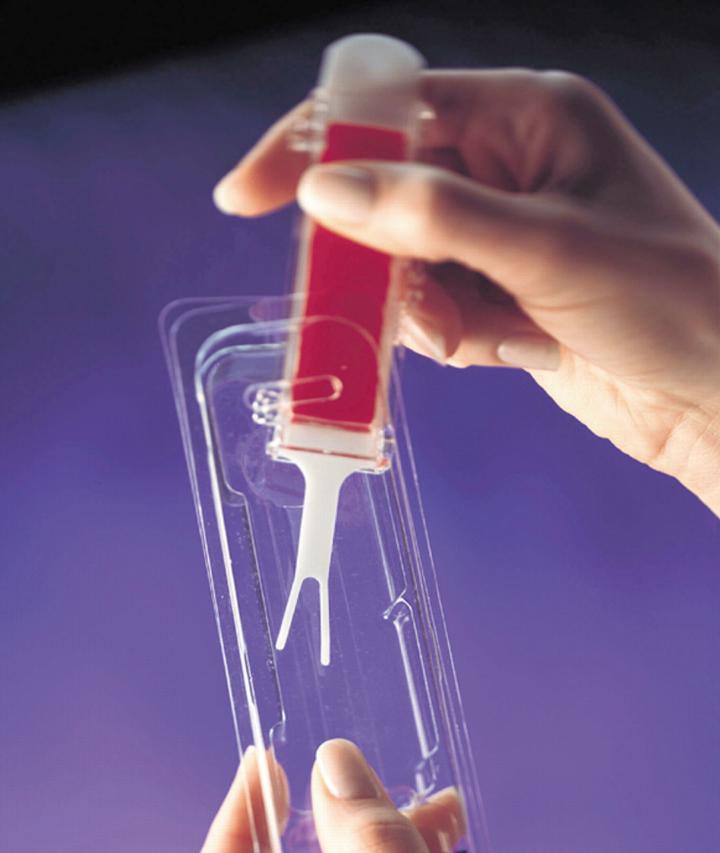Two of every 3 adolescent girls in the United States have had sexual intercourse by age 19, and most use condoms inconsistently, placing themselves at risk of sexually transmitted infections and unintended pregnancy. Rates of chlamydia and gonorrhea are 6 times greater in this age group than the national average. Most of these infections are asymptomatic, making screening an essential technique for infection control. Human papillomavirus infection is the most common sexually transmitted infection in this population and has been linked to an increased risk for the development of carcinoma of the cervix.
Based on this risk, and the ability to screen for cervical carcinoma by Papanicolaou smears, a number of distinguished professional organizations—such as the Institute of Medicine and the Centers for Disease Control and Prevention—recommend annual pelvic examinations as soon as a young adolescent becomes sexually active. However well-meaning, these recommendations are not evidence-based but were developed mostly by committee consensus.
Cervical cancer is a rare event in adolescents. The tumor registry in California reports that it would take 500,000 pelvic examinations with Papanicolaou smears to identify 1 cervical carcinoma in this age group. This low rate of cancer in adolescents is supported by the most recent review of smears in teens in which not 1 case of carcinoma was identified among more than 10,000 smears reviewed.1 The largest review of smears in sexually active teens and young adults reported a low rate (1.9%) of squamous intraepithelial lesions (SIL).2
Most cytopathologists now agree that low-grade SIL represents infection with the human papillomavirus and that the infection will resolve within 24 months.2 In most cases, the cytologic changes revert to normal. Thus, an aggressive interventional approach to low-grade SIL, including colposcopy, is no longer widely accepted.
If cancer is not prevalent in this population, and if a commonly diagnosed condition—low-grade SIL—resolves in the vast majority of patients, we clearly need to reassess the annual Papanicolaou smear program. There are intangible but real costs of falsely abnormal (“false-positive”) changes on smears: young women can become overly worried about developing cancer and may have to undergo repeated examinations unnecessarily.
Sexually transmitted infections, rather than cervical cancer, pose a more immediate threat to adolescents. Accurate urine screening tests are now available for chlamydial and gonococcal infections, and screening for chlamydia is cost-effective,3 making annual pelvic examinations for healthy adolescents obsolete. Continuing with the current recommendation for annual screening for sexually transmitted diseases, but now substituting the new urine-based technologies, the challenge before us is to determine which young women need a Papanicolaou smear, when should screening begin, and how often should it be done.
Figure 1.

Urine culture systems can be used in the diagnosis of gonococcal and chlamydial infections
© Trek Diagnostic/PR News Foto
Competing interests: None declared
References
- 1.Mount SL, Papillo JL. A study of 10,296 pediatric and adolescent Papanicolaou smear diagnoses in northern New England. Pediatrics 1999;103: 539-545. [DOI] [PubMed] [Google Scholar]
- 2.Moscicki AB, Shiboski S, Broering J, et al. The natural history of human papillomavirus infection as measured by repeated DNA testing in adolescent and young women. J Pediatr 1998;132: 277-284. [DOI] [PubMed] [Google Scholar]
- 3.Shafer MA. Annual pelvic examination in the sexually active adolescent female: what are we doing and why are we doing it? J Adolesc Health 1998;23: 68-73. [DOI] [PubMed] [Google Scholar]


